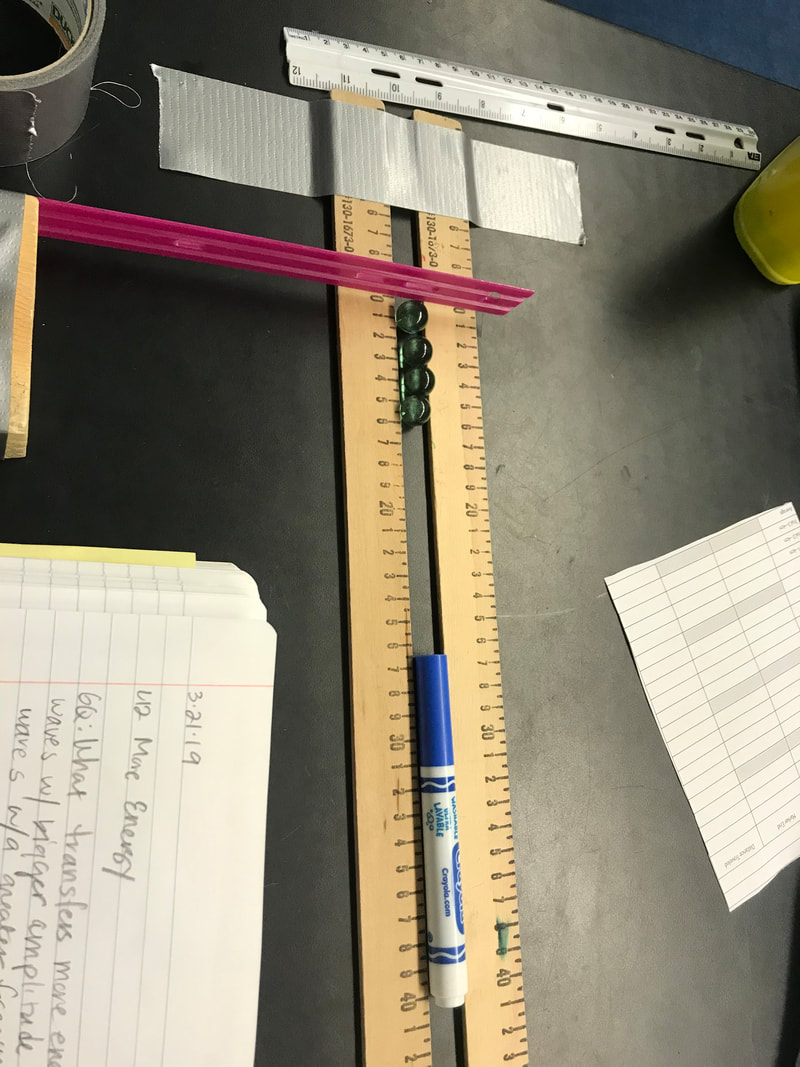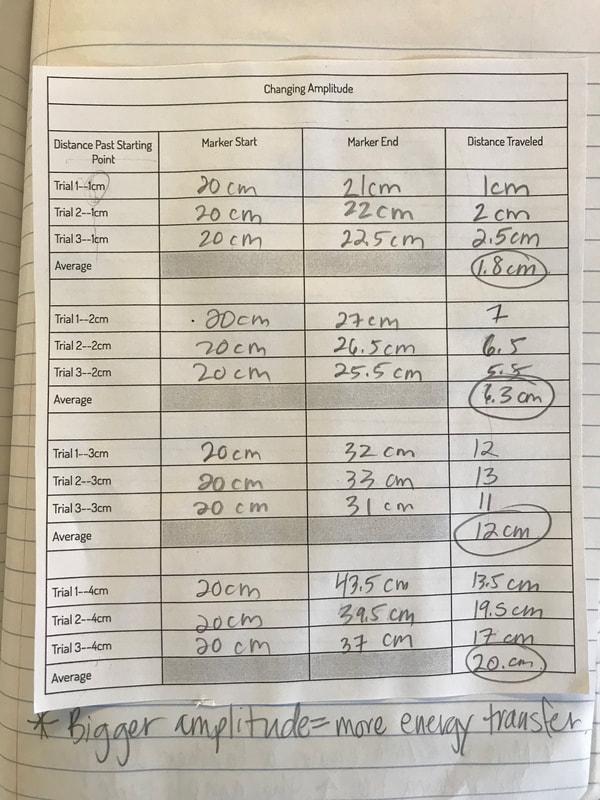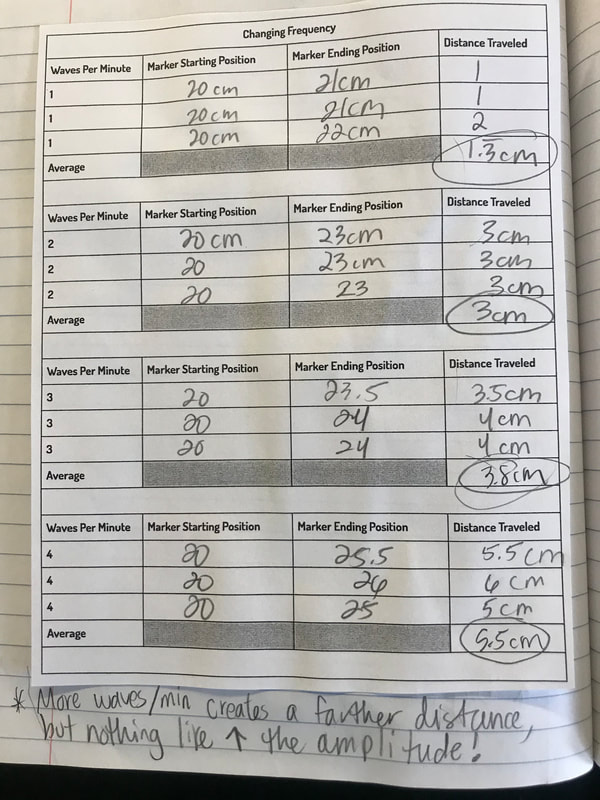Since figuring out what happens in the medium between the sound source and the sound receiver, we wanted to go back to the truck video that started this all and connect it to a pretty crazy video Mrs. Brinza found...
We were really curious about how the amplitude and frequency of both these cars' speakers affected the nearby window's and the woman's hair. So we set up an investigation as a class with our own sound source (ruler attached to a block), a medium (marbles) and a sound receive (blue marker) to investigate which of these variables of a sound makes the most impact:
| From all our data collection, we figured out two important ideas: 1. Increasing both the amplitude and the frequency increases the amount of energy transferred. 2. But amplitude makes a bigger impact on the sound source than frequency does. Overall, the marker moved a farther distance when we manipulated the amplitude over the frequency. |
NEXT STEPS! Explain our sound phenomena!!! We've got all the pieces now! Yahoo!





 RSS Feed
RSS Feed